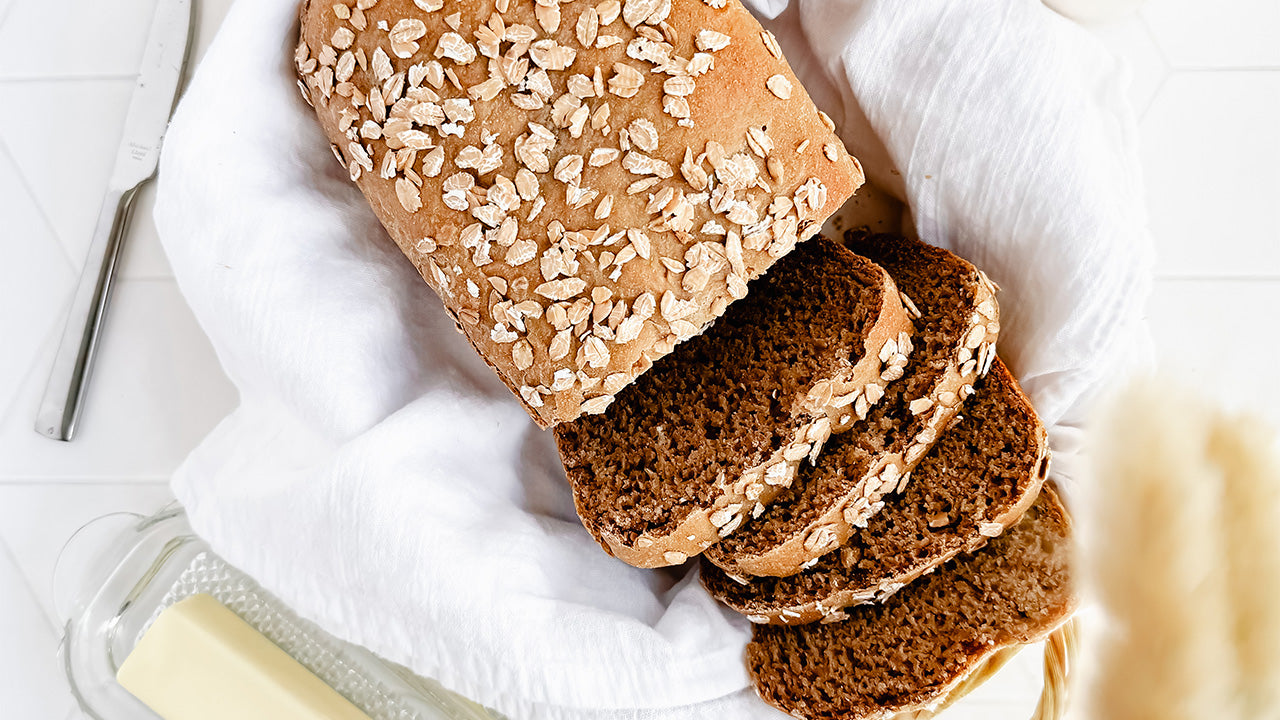The journey to good health doesn't start with medicine but with the foods we choose to eat. Thanks to St. Hildegard of Bingen (1089–1179), a remarkable German Benedictine abbess, mystic, and Doctor of the Church, we've been blessed with recommendations revealed to her by God for nourishing our bodies and uplifting our spirits. In this recipe, we'll be using spelt (Triticum spelta): one of the earliest cultivated grains, and the grain which St. Hildegard recommended for good health.
St. Hildegard sings the praises of spelt, hailing it as the ultimate grain. "It is warming, fattening, strengthening, and milder than any other grain," she writes. According to her writings in Physica, spelt nurtures robust flesh, invigorates the blood, and bestows a joyful state of mind.
Compared to regular wheat, spelt boasts a lower glycemic response, thanks to its higher protein and fat content, along with a treasure trove of nutrients like magnesium, arabinoxylans, beta-sitosterol glycoside, ferulic acid, and phytic acid. Its unique gluten makeup also makes it a friend to some people with gluten sensitivities.
Beyond its nutritional benefits, spelt presents advantages for farmers as well. Requiring less soil nitrogen than modern wheat, spelt thrives in organic farming practices, demonstrating greater resilience against weeds, pests, and diseases.
In this post, we'll delve into a family favorite: a simple spelt bread recipe that's a hit with our five kids. Even amidst the hustle and bustle of daily life, making this bread is a breeze, bringing not just nourishment but also a sense of warmth and well-being to our home.
Ready to add some of St. Hildegard's wholesome goodness to your kitchen? Let's bake this simple bread.
Simple Spelt Bread Recipe
Inspired by St. Hildegard of Bingen

Ingredients
- 1 1/2 cup warm water
- 2 1/2 tsp active dry yeast
- 1/4 cup sugar
- 1 tsp salt
- 400 grams whole grain spelt flour, plus 2-3 cups extra if needed
- 1 tbsp milk
- 2-3 tbsp spelt flakes
Directions
-
Combine warm water, yeast, and approximately 1 tsp of sugar in a mixing bowl. Allow the mixture to rest for about 5 minutes until foamy.
-
Add the remaining sugar and salt, gradually incorporating spelt flour until a sticky dough forms. Add reserved flour as needed until the dough gathers in the center of the bowl.
-
Transfer the dough onto a floured surface, shaping it into a ball. Place the dough in a lightly greased bowl, cover with a dish towel, and let it rise in a warm spot for one hour.
-
After the first rise, roll the dough into a square shape and then into a log. Place the log seam-side down into a 9x5 inch loaf pan lined with parchment paper. Cover with a dish towel and allow it to rise for another hour.
-
Meanwhile, preheat the oven to 350 degrees F. After the second rise, brush the top of the dough with milk and sprinkle with spelt flakes.
-
Bake in the preheated oven for 35 minutes or until the top turns golden brown. Let it cool in the pan for a few minutes before transferring to a wire rack to cool a bit more before serving. Slice and savor the wholesome goodness of spelt bread! Leftovers can be stored at room temperature for up to 72 hours.




